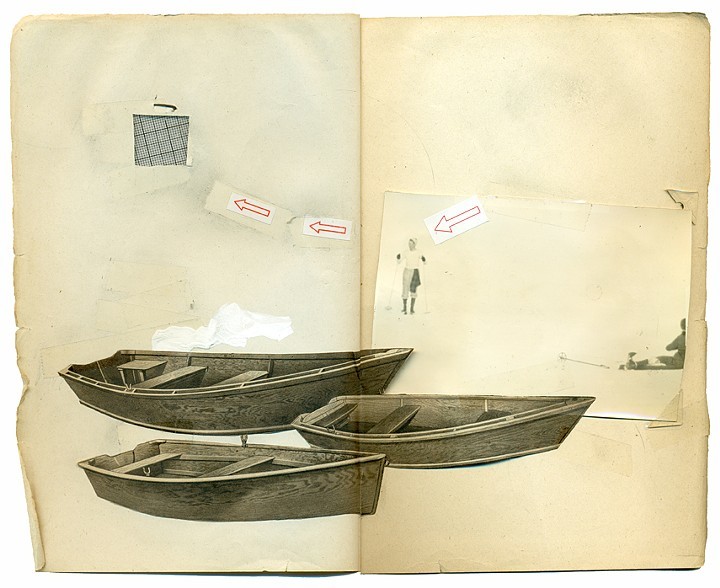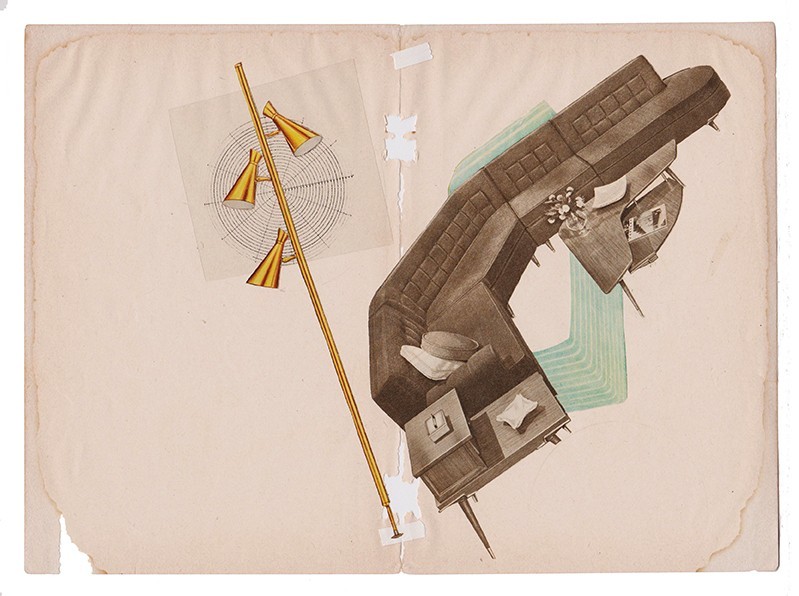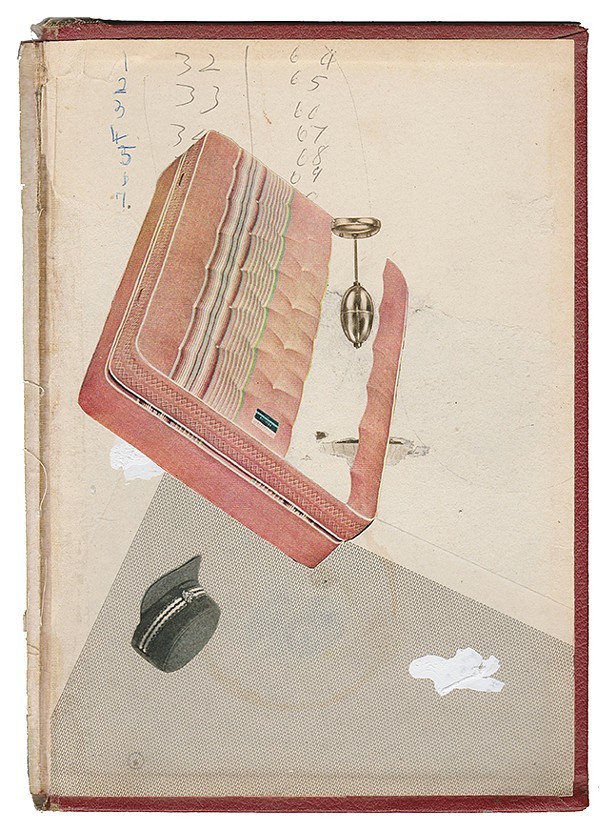interview
CORY W. PEEKE
collage artist
︎ USAmarch 25, 2020


Could you please introduce yourself a little? Where are you from and how did you start to explore art?
I’m Cory Peeke a soon to be 52-year-old short, fat, gay man who is riddled with self-doubt, anxiety and an eclectic array of other insecurities. I make collages in part to distract myself, at least for brief periods of time, from my brain’s bombardment of dark thoughts.
I currently live in a small town in the state of Michigan in the US. I’ve made stuff since I was a kid, mostly drawings in one form or another. I didn’t begin to experiment with collage until after I left undergraduate school, around 1992.
Do you have any formal art training?
I do. I have a fairly traditional background in drawing and painting. I received my BFA from Kendall College of Art and Design and my MFA from the University of Idaho.


Do you work in any other media?
Collage is certainly my primary medium, but I do draw on occasion, usually with my students in my life drawing classes or just working out ideas in my sketchbook.
You seem to be working exclusively analog, am I right? Any thoughts on digital collage work?
I do work strictly analog. I appreciate some of the digital work that is out there, but the physicality of the medium is important to me and my process.
To me, your work has a somewhat nostalgic feel to it. How would you describe your collage work in your own words?
I can see that, but I do try to steer clear of outright nostalgia. I do not wish to return to some imagined “better time” or create works that portray the past as some sort of lost utopia. However, I do use images of items from my youth, but hopefully not items that are so dated as to be a distraction (no bell bottom jeans or leisure suits for me!). The images of ladders and boats that I use are items that are still often in use. Items that like the images themselves still have a purpose and a presence.


Could you describe your creative process? Do you work on one or several pieces at a time? And how long does it usually take you to finish a piece?
I try to work on at least a couple of pieces at a time. I tend to work slowly moving things around, trying things out, standing back, looking, thinking about my next move, adding and subtracting. Making a collage, to me, is like trying to solve a puzzle. I don’t start a new work with a set agenda or even a composition in mind. I usually begin with a mark or an image and build the collage from there. It is a lot of trial and error. Some pieces will come together in a day or two and some take weeks.
Do you have any specific ephemera you are drawn to?
Lately I have been using a great deal of images from 1970s-80s retail merchandise catalogues, especially images of boats and ladders. Again, I try to choose imagery that may be of a particular time, but not necessarily obsolete or so of the time in which it was made as to be obvious at first glance.


You do seem to have a thing for boats and ladders. Do you care to elaborate?
Boats and ladders, to me, are both transgressive and transcendent objects. For me they are symbols of the way human beings both defy and strive to exceed our physical limitations. With these items we can move above the earth’s surface, if only a few feet, or float upon it. These often precarious and yet relatively simple devices allow us to move beyond the limitations of our bodies and search for new outlooks. They imply a striving for something more. And maybe, just a bit, they become vehicles to transport ourselves elsewhere, to escape.
I hope that makes sense, it is hard to put into words why I feel they are the proper imagery for me right now, I suppose that is why I make collages instead of writing.
In your recent work you also use a lot of tape. What appeals to you about tape?
My use of tape makes the adhesive (something usually hidden in most collages) a visible and an integral part of the work. I use tape as both a way to hold the work together as well as to make a mark, something akin to drawing or painting. The physicality of it reminds me a great deal of painting in that it functions as both a mark and textural element in the work.
There is also something so unforgiving about it that I like. The challenge of working with it.


You seem to put a lot of thought into naming your pieces. Do you feel titles are important to experiencing your work?
I think they are important to me and my way of addressing my feelings about the work. I hope they might be of some assistance to the viewer, but honestly the titles are for me. For a long time, I never titled a work or if I did it wasn’t terribly meaningful. Now, like the works themselves, the titles are more honest.
How do you think your work has changed over the years?
These latest works were instigated by a traumatic life event that sent me into an extremely deep depression. The event made me question almost everything I thought I knew and/or believed to be true. It made me doubt everything. It had, and quite honestly still has, a profound impact on my belief in myself and my ability to trust myself and those that I love.
Following that event, I found that making was a way to begin to both process what happened as well as to focus on something other than a deep urge to want to remove myself from this plane of existence. Collage (plus my dog, Lorelai, and a few good friends) pretty much saved my life and these works continue to help me develop and explore my emotions. And through all this I think the work has become more honest, more truly my own. I continually try to get to something uniquely me, my truest voice.


What are your working on currently?
I am still working to heal and grow. The most recent work is still very much a way for me to process and deal with what has happened.
Any plans for future projects?
Just to make more work, heal and keep breathing.
Who are some of your favourite collage artists?
There are so many! I love Instagram just because it allows me to be able to see all the amazing work that gets posted every day, it is both inspiring and humbling. A comprehensive list would be an EXTREMELY long one, but a few of my top favourites are (in no particular order): Katrien De Blauwer, Fred Free, Oliver Lunn, Eli Craven, Paul Fujita, Vincent La Scala, Allan Bealy, Aaron Beebe, Anthony Zinonos, Flore Kunst, Ross Carron, Bill Noir, Lita Kenyon, Evan Clayton Horback, Robin Cracknell, Sara Miller, Melinda Tidwell, Jay Riggio, Ben DiNino, Rhed Fawell, Sabine Remy, Dervin Batarlo, Petra Zehner, Dan Daughters, Charles Wilkin, Michael DeSutter, Victoria Cecé, Massimo Nota and John Hundt. There are so many more and I know as soon as this is posted I will think of 20 more and feel bad that I didn’t include them here.
What is the hardest challenge for you being an artist?
To make work that is both visually engaging and intellectually and/or emotionally evocative for both myself as well as those who view the work. I want my work to touch others. If it is just because they find it formally interesting that is something, but I hope that they will take the time to engage with the work beyond the formal properties to find something meaningful in it for themselves.
What advice would you give someone just starting out their creative journey?
Make work, lots of it! You have to make a lot of bad work to get to the good work. And be your own worst critic. Your friends will always tell you you’re great and it can be easy to settle, but you have to push yourself and not accept the easy answer. Don’t settle!
Cory W. Peeke ︎ ︎
interview: Petra Zehner